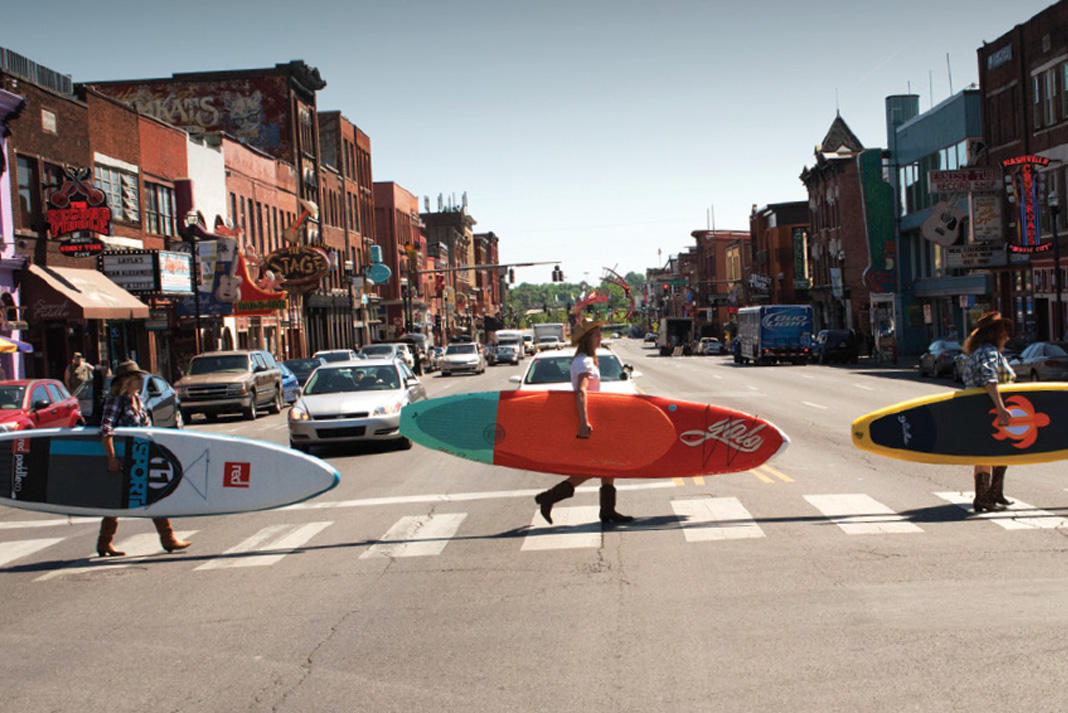Choosing your first standup paddleboard can be a surprisingly difficult purchase. Options seem endless and many boards cost about the same as your first vehicle. There are now dozens and dozens of brands manufacturing boards, each with various models for different styles of paddling.
Perhaps the biggest decision to make—and the one question retailers get asked the most—is whether to opt for an inflatable or a hard board. Many manufacturers now make both, and unless you’re looking at a high-end, specialized hard board, the price difference between the two types can be negligible. Depending on the type of paddling you want to do, both types have their advantages.
Read on for our overview of inflatable paddleboards vs hard, so you can figure out which kind is best for the type of paddling you intend to do.
Advantages of inflatable paddleboards
The most obvious advantages of inflatables are portability and the ability to store them small. Fold one up into your luggage while flying, throw it on the back of your motorcycle, or hike it up a mountain to access remote lakes. There are few limits to where you can paddle with an inflatable. And if your downtown condo doesn’t have much space, just roll it up and store it in the closet.
Durability is also an advantage—inflatables are surprisingly rugged. “Drop them, kick them, dropkick them, throw them, crash them, bash them—they’re tough,” confirms C4 Waterman global ambassador, Todd Lawson.
Typically made with ultra-tough PVC or similar rubbers and plastics, these boards practically require a shark bite to get punctures. It is this durability that makes inflatables great for kids, who won’t have to worry about bashing their inflatable against rocks, or bashing themselves on their boards.
Cons of inflatable paddleboards
The lack of rigidity inherent in some inflatables means many are not as efficient as a hard board. Inflatables don’t glide as well on the water, or as fast. Though inflatable board technology has come a long way, elite paddlers still usually prefer hard boards for performance.

However, “you can’t judge a board by its material,” argues Boardworks rep Gretchen Gamble. “Shape, rocker and fins are just as big a factor as material when it comes to performance. Just like hard boards, there are a wide variety of inflatables available. Some inflatables are more responsive than others, and some are much better for touring and long distances.”
The only tangible downside to inflatables might be pumping up the board, which usually takes between five and 10 minutes.
Advantages of hard boards
When it comes to choosing between an inflatable or hard paddleboard, racing is the one area where the decision is definitive. If you’re looking to get competitive about paddleboarding, you likely need a hard board. Most racers, surfers and touring paddlers use hard boards. The exception to the rule is whitewater paddling, which is solely the domain of inflatables.
“A well-designed hard board will perform better in the surf, generally has more glide than an inflatable, and no pumping is required,” advises Gamble.
Some paddlers also argue that hard boards just look sexier.
While durability has dramatically improved in recent years—a bowling ball was repeatedly smashed into a hard board without leaving a mark at the Pau Hana booth at Outdoor Retailer in 2016—scraping, scratching and bouncing off rocks still sounds absolutely terrible on a composite board. Fortunately, any small dents and cracks are easily fixed with epoxy and some sandpaper.

Subscribe to Paddling Magazine and get 25 years of digital magazine archives including our legacy titles: Rapid, Adventure Kayak and Canoeroots.

